Vintage Bits: Star Saga, an Innovative Hybrid Sci-Fi Computer RPG Series
While numerous computer games and genres have been inspired by board games and books, ranging from chess to more complex strategy games and even J.R.R Tolkien, the computer roleplaying game widely has its origins in pen-and-paper tabletop games like Dungeons & Dragons.
By the late ’70s and early ’80s Dungeons & Dragons had become a cultural phenomenon, and heavily influenced the earliest computer games. Computer roleplaying games, CRPG’S, derive much of their terminology, settings and game mechanics from this classic tabletop game. Typically this includes a central character (or party) which the player assumes the role of, taking responsibility for their actions within the narrative.
The character typically has to be victorious by completing different quests while exploring the world, solving puzzles, and engaging in combat – all while a game master (or dungeon master) controls all aspects of the game and its storyline.
From the earliest mainframe CRPG games to the huge success of the genre on personal computers up through the ’80s, games had almost exclusively been limited to the small phosphorous screen – maybe with a little aid from notes or drawn-out maps.
The Star Saga adventure roleplaying series created by Masterplay in the late ’80s would turn this upside down and put almost the entire game back on the table, only using the computer as game master to do the more tedious and cumbersome aspect of “bookkeeping” throughout the game.
[Click the images for Star-sized versions.]
Star Saga ended up as a series of two sci-fi adventure roleplaying games, set in a far distant future. The games were designed by three college students, Rick Dutton, Walter Freitag, Michael Massimilla and co-creator of Wizardry (one of the first and best-selling series of CRPG’s for the personal computers), Andrew Greenberg.
In 1982 Dutton, Freitag, and Massimilla founded the Harvard Society for Interactive Literature – later shortened to, Society for Interactive Literature, or SIL. The group innovated a theatre-style form of role-playing game and in 1983 began organizing weekend-long game events called Rekon, which were played at the Boskone science fiction conventions held in Boston.
Just before the second Rekon, Massimilla had an encounter with Greenberg, when they both competed in a bridge tournament. Massimilla introduced Greenberg to Dutton and Freitag, an encounter that eventually led to Greenberg attending Rekon-2 and sparked the idea to capture the experience in the form of a computer game. The four set out to create a computer role-playing game inspired by the elements of Rekon.
In 1987, Massimilla moved to Florida, where his girlfriend started attending grad school in Tampa. Massimilla managed to drag the Greenbergs with him.
Massimilla incorporated Masterplay Publishing Corporation as a Florida company in 1987. Greenberg became President and Massimilla vice-president.
The Star Saga project soon grew, and the four would end up making the game a trilogy. The enlisted the assistance of two more; Sheila Greenberg, Andrew’s wife, who contributed with much of the text and humor, and Gerry Seixas, who edited the text into a slick and well-written sci-fi story.
Star Saga: One – Beyond the Boundary
In the first title, released in 1988, the players leave their homeworlds, setting out to explore the vast unknown of space, travel between different planets to trade goods, acquire resources, improve their spacecraft’s capabilities, and progress through the game’s narrative – beyond the boundary of the nine homeworlds.
Star Saga: One – Beyond the Boundary, the IBM/PC release from 1988. The game included
13 booklets with almost 900 passages of text, 6 tokens and a color fold-out map
Star Saga: Two – The Clathran Menace
In the second title and direct sequel, released in 1989, a gigantic armada of alien ships scours the galaxy, seeking to eliminate all life. The players must explore space uncovering technologies with which to oppose the eminent threat.
Star Saga: Two — The Clathran Menace, the IBM/PC release from 1989.
This title was even bigger than its predecessor, with 14 booklets
At the beginning of a game, one to six players would choose from six different character profiles. Each character has a different background story and motivating goals. These goals were intended to remain undisclosed to the other players and could only be completed by exploring and interacting with the game’s universe. You’d win the game when your character had completed his or her assigned goals.
All players would start out with a non-upgraded starship, physically plot their desired moves on the included color fold-out map, and then enter the movements and other desired actions into the game master program. The software then determined the results, updated the character’s statistics and inventory, and directed the player to read one or more text passages from the accompanying booklets.
Upon reading, the player discovered the consequences of his or her actions, as well as any new information to help narrate the fictional story. In some cases, the actual results of a turn will be quite different from those planned.
If the floppies weren’t present you would think this was a classic board game.
While the large amount of reading would slow the gameplay down considerably, it did give a feeling of playing a true board game with far more social interaction than what a computer-only game would produce. Much of its entertainment value came from the interaction between players, not between player and computer. And with a neutral game master that easily would keep track of all stats, the storyline, and inventory, the focus was on gameplay and interaction.
The game master software was text-only and could be consulted for information regarding your player. The text passages referred to by the software, were broken into multiple booklets so players simultaneously could read from separate sources.
Over a number of turns, each player would slowly progress through the game, discovering the unlabelled planets on the map and uncovering the mysteries of the galaxy.
While the central game plot itself is somewhat linear, players are generally free to move back and forth between worlds, trade various goods as desired, and otherwise explore the game’s various sub-plots. Additionally, some elements were randomized between games, in order to increase the replay value.
Both Star Saga titles were released for the Apple II, IIgs, the IBM/PC and Tandy 1000.
While Star Saga originally was intended to be a trilogy, poor sales resulted in Masterplay selling the series to Cinemaware in 1990 and unfortunately, the third and final title never materialized.
The games received great reviews, and were praised not only for their unique and highly innovative approach to CRPG’s but also for being some of the most well-written and well-produced games of their times.
This post was originally published at the Retro365 Blog. Copyright 2019 by Ernst Krogtoft.
Previous Vintage Bits articles at Black Gate include:
In Search of the Lost Black Crypt (2012)
Sword of Aragon (2013)
Lordlings of Yore (2013)
The Crescent Hawk’s Inception (2013)
Icewind Dale: Enhanced Edition Available for Pre-Order (2014)
TSI Kickstarter is Rebooting the SSI Gold Box Series (2015)
The 10 Greatest Dungeons and Dragons Videogames (2015)
How G.O.G. Rescued the Classic Forgotten Realms Computer Games (2015)
FTL — Faster Than Light by Ernst Krogtoft (2019)
Some Random Big Box PC Games: Wizard’s Crown, Thomas M. Disch’s Amnesia, Waxworks, Discworld II, The Coveted Mirror, Truberbrook by Stuart Feldhamer (2019)
Ernst Krogtoft lives in Copenhagen. He was an avid gamer in the ’80s. His father worked for IBM; they always had multiple systems at home, and Ernst became fascinated with the games and the technology at an early age. He’s been collecting vintage computer software for almost 20 years, focusing on titles from 1978 to 1994. Today he sees himself as more of a vintage games curator, taking care of earlier titles, and writing the stories of the people behind the games, and of a forgotten time. His blog retro35.blog is where he writes about his collection. His last article for Black Gate was FTL: Faster Than Light.
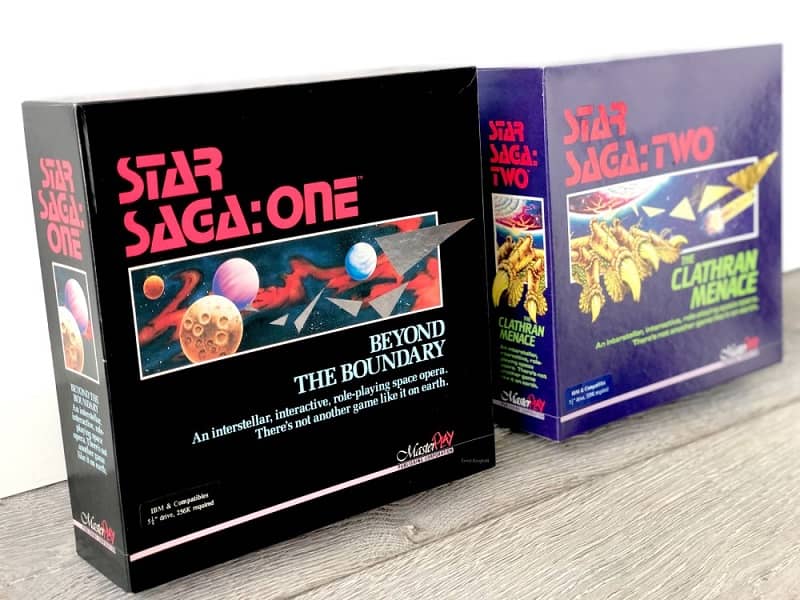
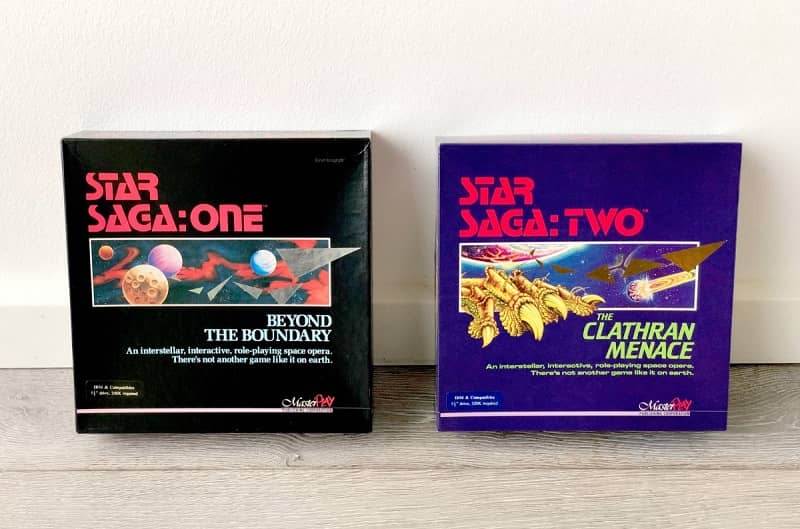
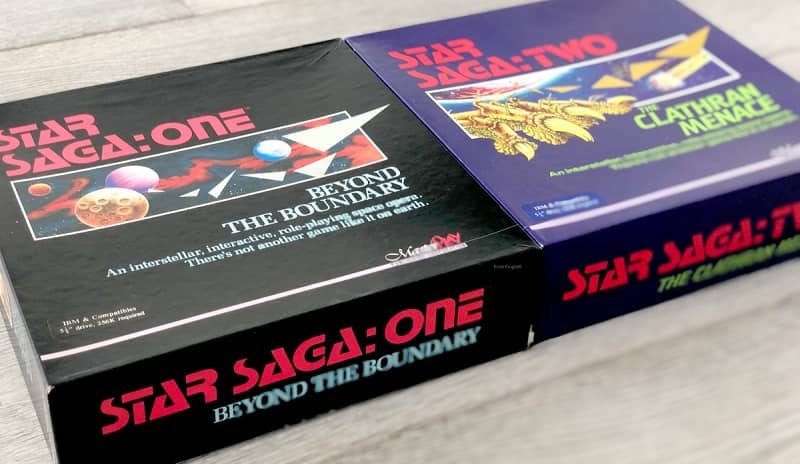
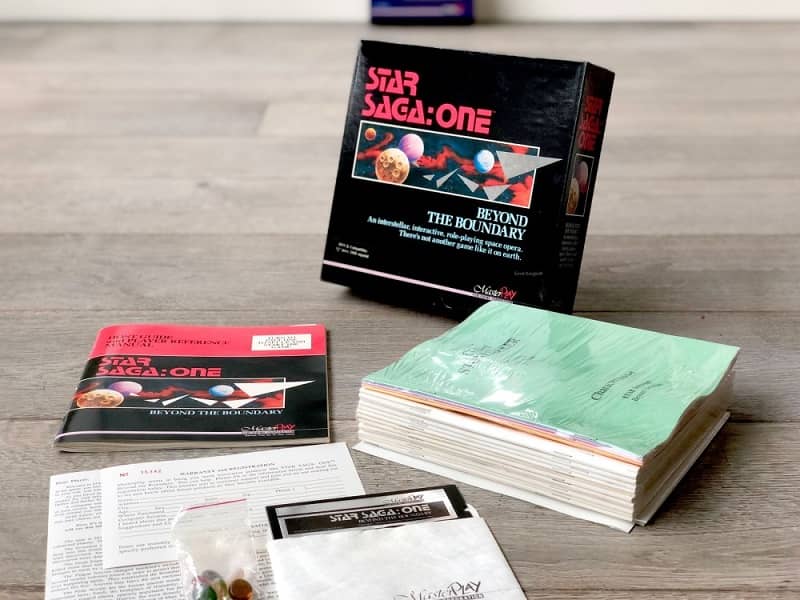
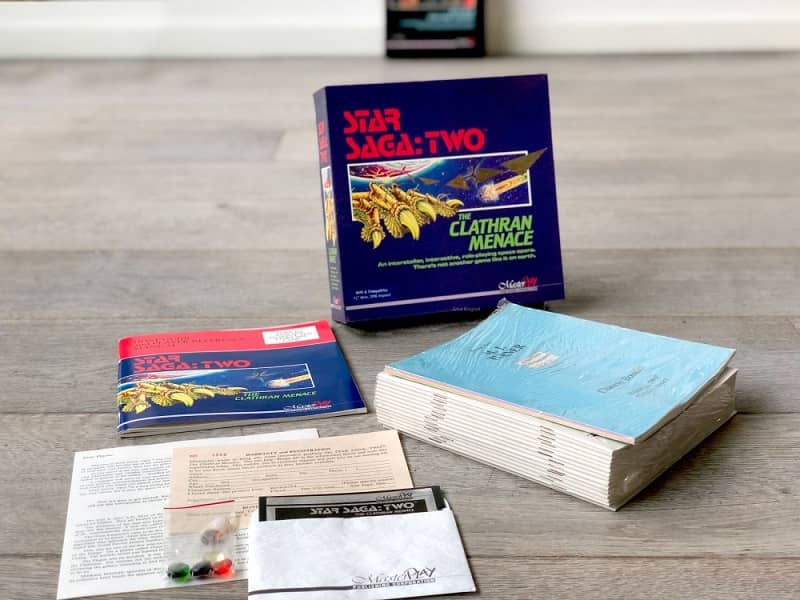
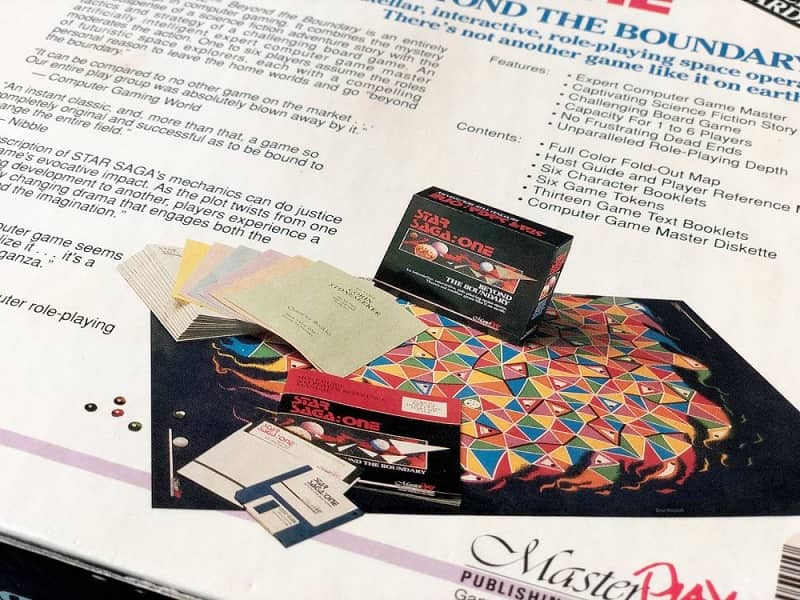
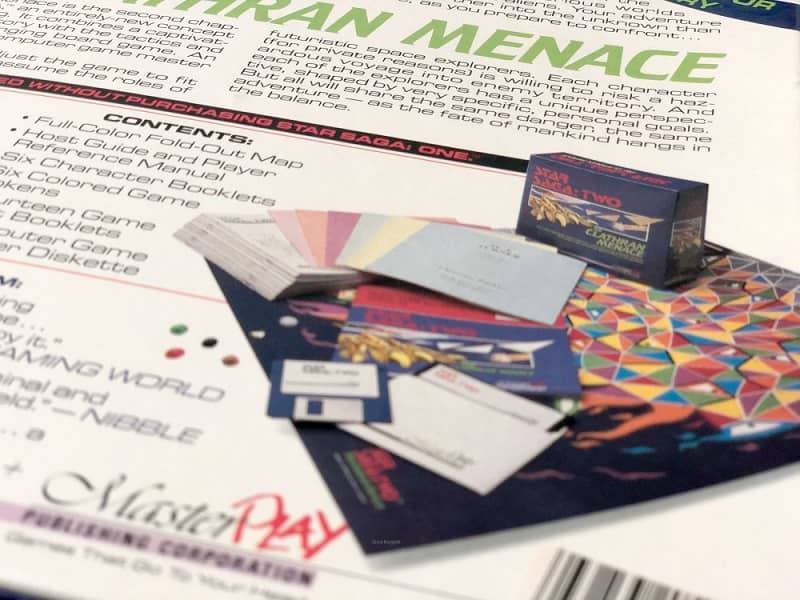
[…] is underway!Star Saga 2: The Clathran Menace (being scanned for archive.org)https://www.blackgate.com/2019/11/04/vintage-bits-star-saga-an-innovative-hybrid-sci-fi-computer-rpg…https://www.jesperjuul.net/text/gameofobjects/ — academic paper presented in playable […]